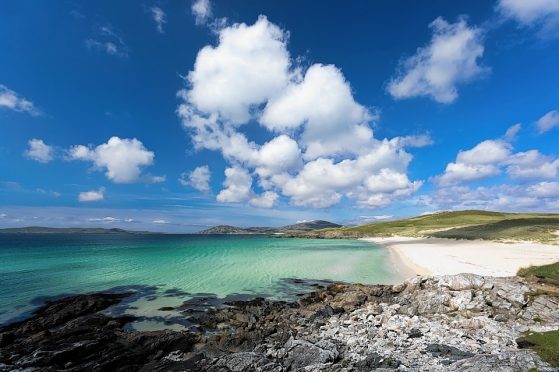Visits to the Scottish islands are up 22% according to the latest figures posted by the Island Visitor Survey, with scenery and landscape being listed as the predominant factor in luring visitors towards the Scottish isles.
A total of 466,125 visitors flocked to the Outer Hebrides, Orkney and Shetland in 2017 boosting the local economy by £137.7million. The behaviour of locals added to the experience for nine out of ten visitors with many stating they were made to feel welcome by locals.
Malcolm Roughead, Chief Executive of VisitScotland, said: “The findings of the Islands Visitor Survey 2017 clearly demonstrate the vitally-important role that tourism plays within the local economy of the islands and I’m delighted that visits and spend continue to grow in these wonderful parts of Scotland.
“The Outer Hebrides, Orkney and Shetland are renowned for their beautiful landscapes, unique historical sites and amazing culture, and it’s wonderful to see the warmth and friendliness of the people shines through the survey.
“Tourism is the heartbeat of the Scottish economy, causing a ripple effect which touches every industry and community, creating employment and economic growth. VisitScotland will work closely with industry and public sector partners in using the findings of the survey to develop and enhance the visitor experience.”
The survey was commissioned by the local authorities of the Outer Hebrides, Orkney and Shetland, in partnership with VisitScotland, to provide up-to-date information on experiences, motivations, behaviours and perceptions of visitors to the isles.
Running from January to December, the survey used 14,000 face-to-face interviews with visitors at key exit points from the isles, such as ferry terminals and airports, as well as issuing an online survey to gather feedback in greater depth.
Tourism Secretary Fiona Hyslop said: “From dramatic and beautiful landscapes and coastlines, to rich cultural heritage and vibrant and welcoming communities, Scotland’s islands have so much to offer to visitors. And with one in three tourists coming from overseas, clearly the international reputation of our islands is on the rise.
“It is fantastic news that 2017 saw a significant increase in visitors choosing to come to the Outer Hebrides, Orkney and Shetland, which has boosted local economies by more than £137 million. This is why the Scottish Government is working in partnership, at a local and national level, to support sustainable growth in rural tourism.”
